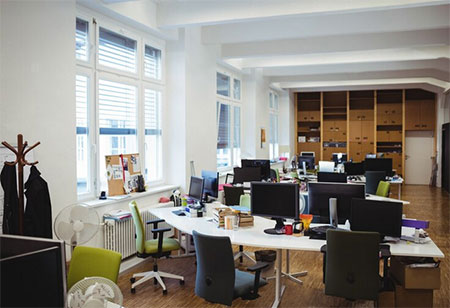
In essence ‘ergonomics’ is considered a science that revolves around the design of work environments, the tools and equipment that are ‘made to fit’ users with the objective to reduce the level of risk of work-related injuries that develop in the long term. The modern office that most of us are accustomed to often subjects’ office workers to long hours at a designated desk with eyes strained on either documents or a computer screen and within this area the need for ergonomics should never be overstated.
This is simply because ergonomic principles generally offer higher levels of comfort which does not only enhance the overall well-being of the office employees, but also increase productivity significantly. This article examines the most relevant components of ergonomics in an office and offers some essential pointers towards establishing a practical ergonomic workspace that is also a component of the Australian Occupational Health & Safety Act of 2004.
Components of Ergonomics in the Modern Office
Ergonomic Desk and Chair Setup
The design of workstations is the first consideration as a practically designed workstation is vital towards the prevention of musculoskeletal disorders and keeping employees comfortable. Key factors that office managers have to pay attention to in this matter is the setup of ergonomic office desks and chairs.
An effective ergonomic chair would generally have various adjustable components such as seat height, seat depth, adjustable backrests and armrests complete with a swivel feature which even most standard office chairs are generally fitted with. As for the desk, the desk should preferably set at a height that ensures that the forearms of the user can be rested at a comfortable 90-degree angle when they are typing.
The monitor placement is also important and the best position for a monitor is to be at the eye level of the user and approximately the user’s arm length away. This ensures that the strain on the user’s eye and neck strain are reduced. Adequate or proper lighting in the office also plays a crucial role in the reduction of eye strain. It is imperative that the workspace is also well-lit to ensure that the distraction due to glare and shadows are minimised.
Ergonomic Keyboards and Mouse Placement
In order to reduce the strain on the wrists and forearm, proper placement of the keyboard and mouse is critical. The keyboard should be positioned directly in front of the user as this would help prevent unnecessary twisting of the wrists and as well as shoulders. The mouse on the other hand should be close to the keyboard which helps to reduce strain on the user’s shoulders.
Breaks and Physical Movement
Sitting for extended hours on a chair, regardless if it is an ergonomic chair or not will still lead to musculoskeletal complications and because of this it would be wise for office managers to encourage employees to go on regular breaks and move about every 90 minutes or so and incorporate some stretching frequently in order to alleviate the tension that builds up due to long hours of sitting.
We use cookies to ensure you get the best experience on our website. Read more...